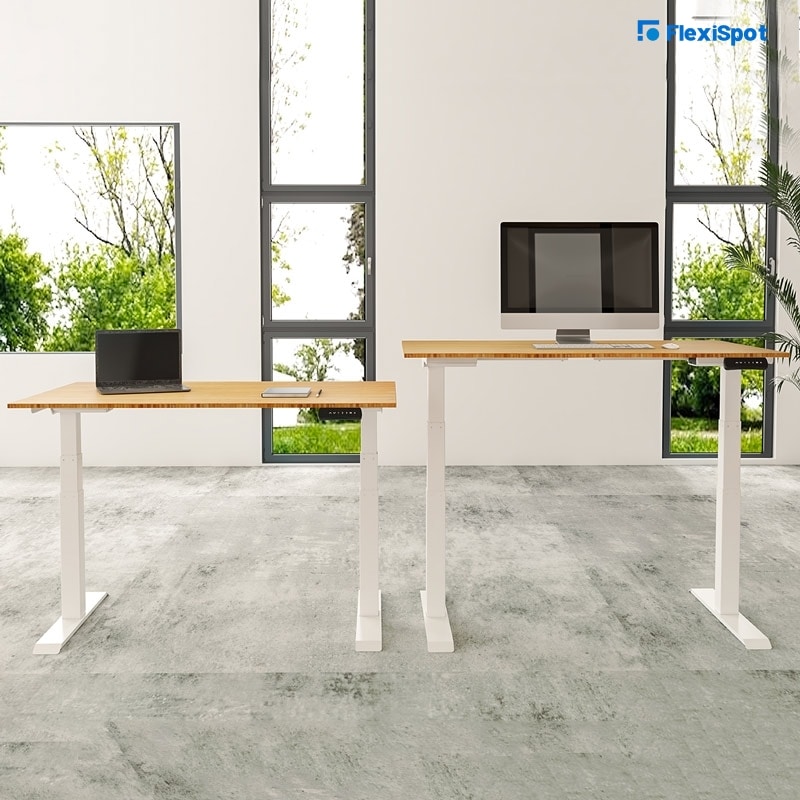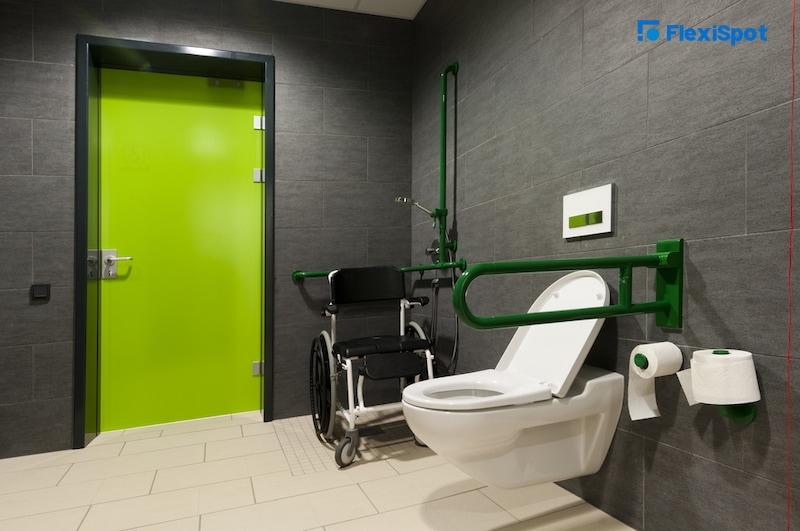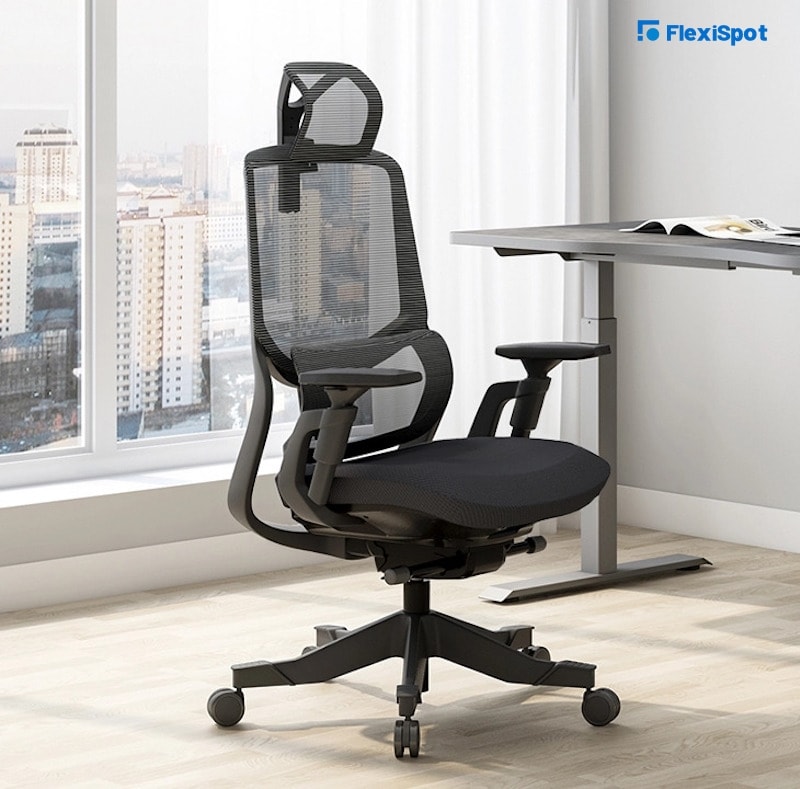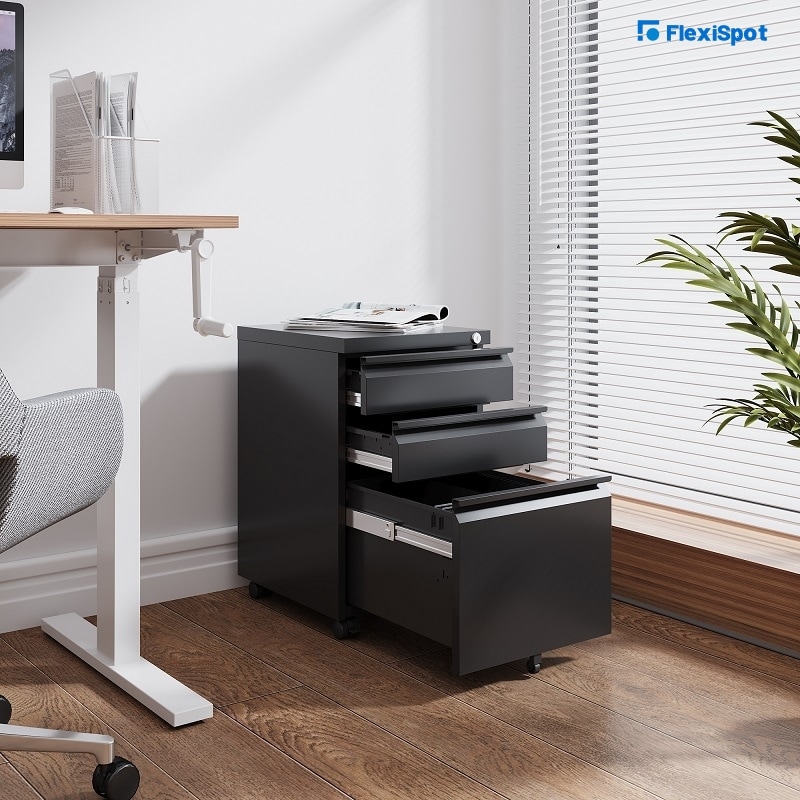In the United States, an estimated 61 million people have a disability. This number includes individuals who experience difficulty with hearing, vision, mobility, and daily activities. It is no secret that the workplace is not always accessible to those who are physically disabled. In many cases, the office is designed with only those who are able-bodied in mind, leading to frustration and difficulty for the disabled.
But by making a few simple changes, we can make the office more accessible and help everyone work to their full potential. In this blog post, we will explore ways to make the office more accessible and inclusive for physically disabled individuals. We will also discuss the benefits of doing so for both employees and employers alike. Let's get started!
Before We Proceed…
The Americans with Disabilities Act requires that you provide reasonable accommodations to qualified individuals with disabilities who are employees or applicants for employment. This means that you must make changes to your workplace or business practices so that these individuals can have an equal opportunity to be successful. Accommodations may include making your office wheelchair accessible, providing sign language interpreters, or allowing flexible work hours. Suppose you are unsure of what accommodations would be appropriate for a particular individual. In that case, it is best to consult with an employment lawyer or the United States Equal Employment Opportunity Commission.
4 Essential Furniture Considerations that can Make Your Office More Accessible to The Physically Disabled
You can include the following furniture options to make the office space adaptive to the physically disabled.
Adjustable Desks
Conventional office desks pose accessibility challenges to individuals that depend on wheelchairs. Height-adjustable desks are a better alternative for an inclusive workspace. There are a few benefits that an adjustable desk can provide for a physically disabled person. For starters, if the person is confined to a wheelchair, they can adjust the desk's height so that they can roll right up to it and work in a comfortable position.
The designs available in the market today also come with additional features that pose extra convenience for your employees who use wheelchairs. You can opt for electric height adjustment, which allows the user to raise or lower the desk with the push of a button. In addition, features like memory preset enable the user to save preferred heights for added efficiency.
Desks like the Kana Pro Bamboo even come with anti-collision features. This feature prevents accidental collision with objects below or above the tabletop, which is convenient for a person whose condition might lower reflexes. The users would also enjoy the curved desktop option, which allows the user more access to things placed on the desk without too much strain.
Accommodating Bathroom Accessories
You needn’t perform a complete office makeover to ensure your bathroom accommodates the physically disabled. You can still meet the ADA bathroom requirement with simple appropriate additions to the office bathroom.
Below are some that you can operate with:
Toilet seat with built-in support bars to promote stability and can easily be fitted onto the existing toilet seat.
Grab bars, which are installed in strategic places in order to provide support when getting in and out of the bathtub or shower or when using the toilet
Bidet toilet seats – This easy-to-install accessory turns a regular toilet into a bidet.
A toilet seat riser to bring the toilet seat up to a more comfortable height
Install Toilet Frames And Safety Rails. It helps to make using the toilet easier and safer by providing extra stability and support
Ergonomic Seating
Chairs with lumbar support come highly recommended. Good models should feature adjustable arms, adjustable head support, and durable, quality casters that lock and unlock. Such features allow persons with disability to shift in and out of a wheelchair with added ease.
Opt for chairs that feature good ergonomics as the person, more likely than not, spends 90% of their time in the office seated at their chair. Poorly designed chairs could cause the development of back and other muscle injuries that can compound existing issues. Ensure the chair has a good lift mechanism to allow seamless transfer from the chair to the wheelchair or crutches.
Accessible Filing and Storage
It’s no secret that vertical filing is preferred over other storage types, as it makes the most economical use of space. It leaves plenty of floor space for people to move about and stretch. What most people don’t remember is that installing this type of storage solution neglects to consider people living with disabilities.
Despite space economics, office managers should ensure that there are alternatives for people who might have conditions that present a challenge when trying to reach for higher placed items. Make use of lateral reach, increased desktop real estate, under desk storage to make it easier for people living with disabilities to reach more easily.
Consider a mobile filing cabinet with casters that can be pushed out of the way when not in use. Such a solution ensures that the person can conveniently reach the items they need while being mindful of the space occupied–with the casters making it easy for persons of any stature to roll easily.
What Other Adaptive Furniture Can Make a Space More Accessible to the disabled?
By now, you have a good idea of how to include adaptive furniture into your office space. However, you'll still need to perform some more scenario planning. That can help you address some issues that haven't come up just yet!
For your reading pleasure, let's take a moment to look at how other pieces of adaptive furniture can fit into your workplace:
Wheelchair Accessible (ADA Compliant) Desk
The ADA’s compatibility standards state that an accessible desk should have a surface height of between 28 to 34 inches. A 27-inch knee clearance between the floor and the underside of the table makes it easy for someone to slide in their wheelchair. Again a height-adjustable desk is highly recommended. But a fixed/conventional desk could also suffice as long as it fits the stipulated specifications.
Wheelchair Accessible Computer Workstation
Getting a height-adjustable desk or one with adequate knee clearance is a good place to start. However, a wheelchair's arms and wheels can still prevent users from operating their mouse and keyboard. It’s also harder for wheelchair users to access files, stationery, and other things that may be out of reach. This can be solved with accessibility aids such as adjustable keyboard trays and under desk storage solutions.
Lift Chairs
They are recliner seats that lift all the way from the base. These work excellently for an institution with both disabled people and the elderly. Your organization can include these chairs in areas like the office break room to accord every employee comfort as they enjoy their breaks or participate in a brainstorming session.
Footwells
These adjustments in the sitting area allow the feet to be elevated to allow better back positioning. They could come in handy for anyone using crutches and the like.
Portable Drafting Tables
They are adjustable and can be used on any table surface. These tables improve posture by reducing angles that make you hunch over. The table should optimally tilt from about 0 inches to 40inches to cater to various tasks. The table can also be fitted with a ledger stopper to keep your stationery from falling over, which is also a problem for people with disabilities.
What Else Can You Do to Make Your Workplace More Accessible to the Disabled?
Aside from adaptive furniture, you can make the following changes to your business setup and overall corporate culture. Embracing such changes may take a while but will be beneficial to all members of your staff.
Eliminate unnecessary physical barriers: Such changes include ensuring there are accessible parking spaces for the disabled, ramps, and entryways that are more accessible for persons on wheelchairs and other walking aids.
Deploy assistive technology: These include things like braille keyboards for the visually impaired, text to speech software, or other technologies that make life easier for the afflicted.
Remote work initiatives and flextime: Commuting to work can be a daunting task for people with mobility issues and other impairments. Allowing them to telecommute or work part-time can help them attend to their duties with added ease.
Do You Need a Handi-Capable Workplace Policy?
Yes, you do if you aim at fostering equality and diversity in your office space. Aside from making the physically disabled more productive, it can also be an excellent way to show respect to the disabled while boosting their morale.
It sounds life-changing, but is it easy to implement and enforce? To answer that let’s look at what exactly needs to be in this policy? We’ll dig into the key milestones you need to hit when crafting the perfect workplace handi-capable policy:
Selection and Recruitment
There are a few things to keep in mind when recruiting people with disabilities:
1. Ensure that all job openings are properly advertised and that the recruitment process is accessible to everyone. This includes making sure that the application process is easy to follow, that there is an equal opportunity to apply, and that accommodation can be provided if needed.
2. Assess each applicant on their merits, taking into account their qualifications and experience. Disability should not be the only thing taken into account when assessing someone's suitability for a job.
3. Make reasonable adjustments to the recruitment process and work environment to ensure that everyone has an equal opportunity to succeed. This may include providing additional support or training or modifying equipment.
4. Make the playing field level for all members of staff. For example, when advertising for positions that require early commuting, ensure that the persons with disabilities are offered means to mitigate their disadvantage. Solve this by offering convenient accommodation or transport as some of the perks of the position. Do not rule out these applicants based on their presumed deficiencies without at least trying to level the playing field for them.
Working Environment
The workplace environment needs to be designed and furnished to be friendly to the physically disabled, allowing them easy access to any room used by any other person. Here is a breakdown of things that might help:
Have an elevator that goes to every floor if the building only has more than one.
Provide all employees with a parking spot close to the office building entrance for those who might not be able to walk or take public transportation.
Have accessible entrances so people can come through any door they want.
Have occupational therapists come in once every 6 months to check for any new modifications that need to be made in order to ensure that your company complies with best practices.
Return to Work After a Debilitating Incident
The organization should allow individuals who have suffered disability after employment to resume work when applicable and provide necessary measures to accommodate them. The workplace should also amend the contract to reflect the person’s new state of living.
Participation in Workshops and Seminars
The entire workforce should receive equal rights in attending and participating in workshops and seminars. This reinforces every employee’s equal right to career advancement and progression. Therefore, ensure that the venues are as accommodative as your intent.
In Summary
You only need to step into 5 offices in a random building complex to understand the struggle physically disabled people go through. Can you make it through the first floor blindfolded? That’s what a blind person potentially has to deal with. Not to mention people who use wheelchairs who make up the majority of the handicapped employee population. While fully-abled adults make up the largest percentage of the working class, this should in no way excuse offices from making the necessary inclusions to accommodate the physically disabled. There are stipulations by the law (ADA frameworks) that protect the rights of such individuals. Still, our own humanity should drive us towards making the office an inclusive environment for all. We hope our article has given you some insights into changes you can make, or at least triggered the thought of making plans to implement the much-needed changes.






